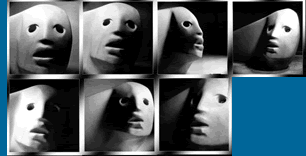|
THERE
ARE ALTERNATIVES
by JOHAN
GALTUNG
<<
One idea permeates this work: no social form is good or bad in itself
but only
in reference to what it does to people. Society is to serve human
needs and self-realization, not social goals abstracted away from
man himself, such as "national interest" (i.e., national
elite interest),
"economic growth", "democracy", "socialism".
Such concepts are, at best, means to that end. But if human self-realization
is the ultimate goal,
then three simple circumstances, rarely heralded by utopian authors,
must receive consideration: Human beings are not similar. Human
beings are not constant. Human beings are not consistent.
1 << There is a crisis in the world today, now felt even by
those of us
who enjoy the power and privileges at the top of the world.
There is a crisis of violence and threat of violence, which ranges
from the U.S. nuclear capability said to equal 615,000 Hiroshima
bombs (which killed around 200,000 human beings) to the ever-increasing
acts
of small-scale terrorism. The whole range from macro to micro violence
seems ready, at times, to be unleashed on mankind.
There is a crisis of misery, and threat of poverty, in poor countries
-where much of the population is still underfed and underclad, lacks
adequate shelter, suffers ill health, and has scant or no education-and
in rich countries-where major unemployment may soon be manifest
by an economy increasingly showing its cracks.
There is a crisis of repression, and threat of repression, of all
human
rights relating to freedom and the opportunity to take part in politics-to
participate in governing oneself - not only in the numerous authoritarian
and totalitarian countries found in the world but also in the democracies,
where repression may any time follow in the wake of the twin crises
of violence and misery.
There is a crisis in the environment, and a threat of local breakdown
of
the ecological balance in some places, because of the depletion
of nonrenewable resources, the pollution of man and nature alike,
and the pressure of an expanding population on a finite environment.
The goals that constitute the nucleus of the present book-an "absence
of violence", "economic welfare", "social justice",
"human rights",
"ecological balance and partnership with nature"-seem
rather far from their realization. If they are seriously threatened,
then human beings everywhere are seriously threatened. For what
are the needs of man
if not to stay alive and not be destroyed through violence; to have
his fundamental needs satisfied (food, clothes, shelter, health,
education),
in order to further human growth; to develop in freedom and active
social participation; and to live in partnership with the nature
of which man is a part, in solidarity with future generations? 2
>>
1
Johan Galtung The True Worlds, A transnational perspective.
The Free Press, N. Y. 1980, pag. XXIII, XXIV
2.
Johan Galtung, Ibidem, pag. 1
April
1984
"This
magnificent sculpture inspire in me exactly the two, maybe three
feelings I think one can have today, confronted with not only the
horrors, but also the likelihood of a major nuclear war: - the unspeakable
fear,
the Angst unspeakable -because it is too horrible really to contemplate
fully however much it may be backed up by the pessimism of a brain
informed by the nature of the current arm race, and how such arms
races tend to end; - the almost naive, childlike expression -is
this what
the world is like? is this what I have been brought into? - the
Prinzip Hoffnung, the principle of hope - the hidden optimism of
the heart, nevertheless there must be some way out, somewhere, it
cannot be that hopeless.I share all these sentiments. And I dare
hope that there must be some elements of humanity left in those
who take the major decisions about war and peace. It is in their
minds so much of the problem is located, prisoners as they are of
their own primitive logic. So, I would like to see that terrified
human being in the sculpture change, I would like to see a smile
spread over the face, the eyes filled with glittering optimism,
the heart proved right, the brain wrong. For,
THERE ARE ALTERNATIVES
to the present madness".
Johan Galtung, April, 1984 Catalogue Contro le Guerre
|
|

